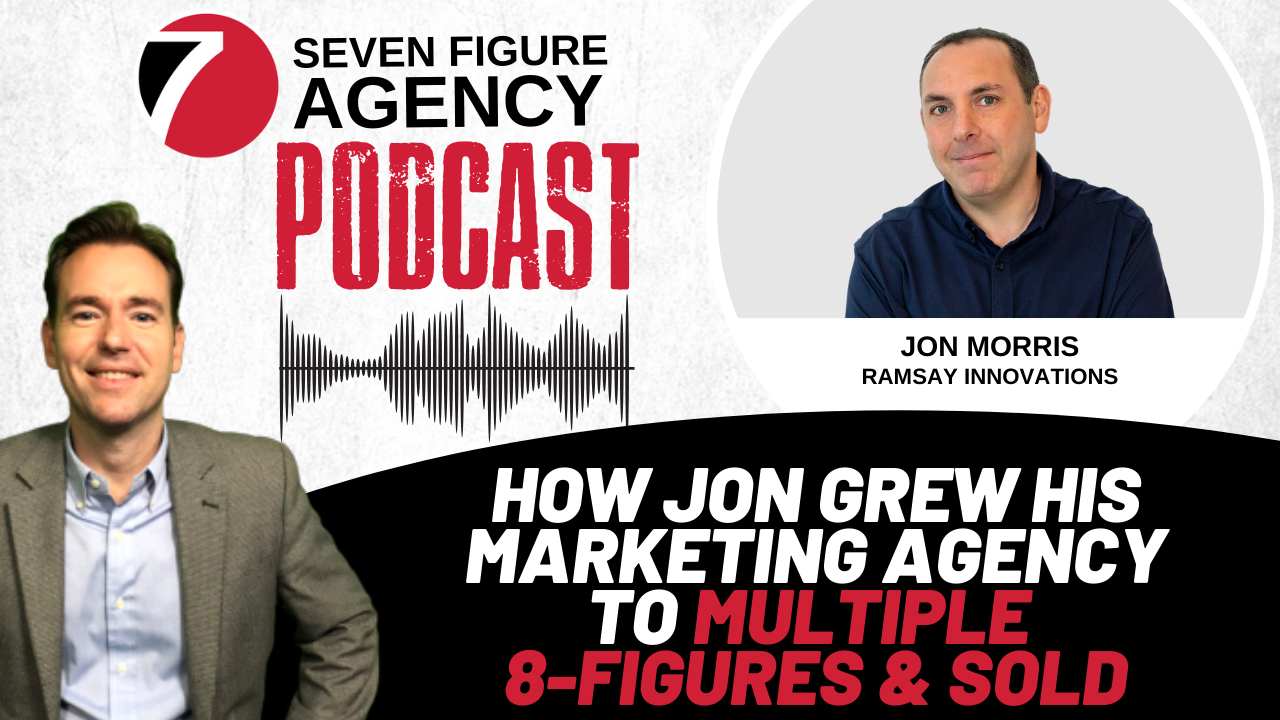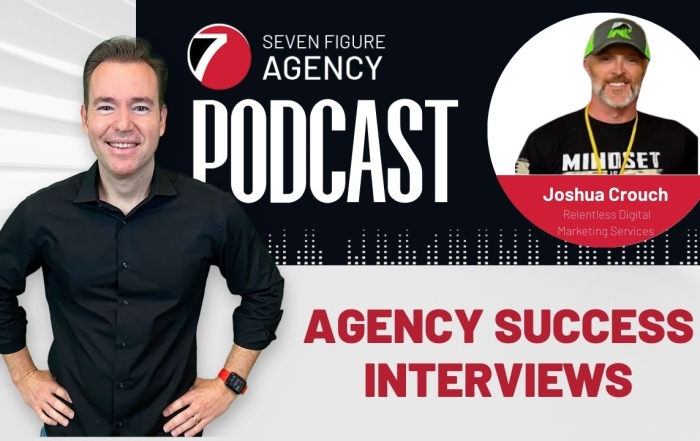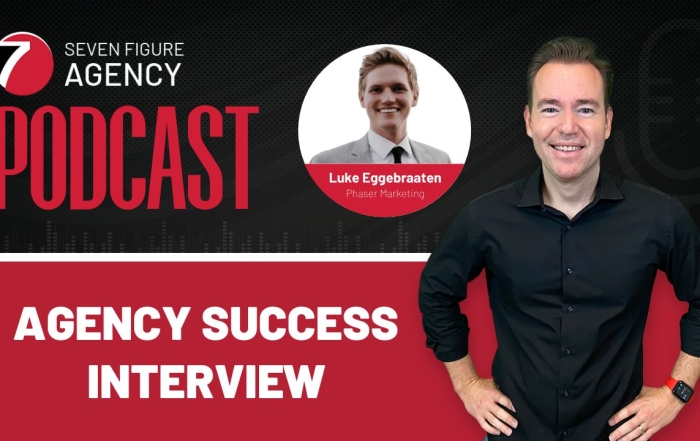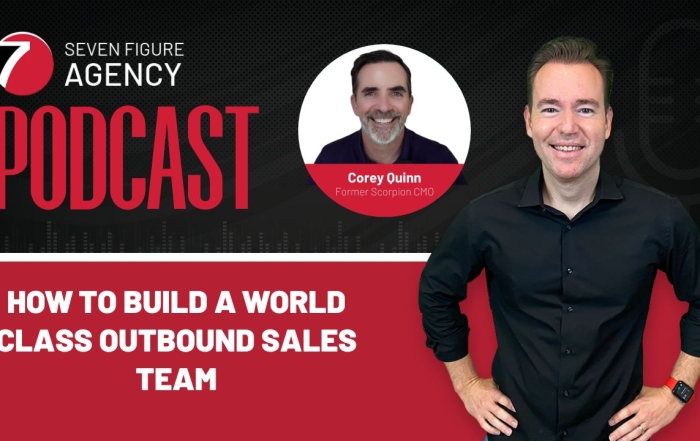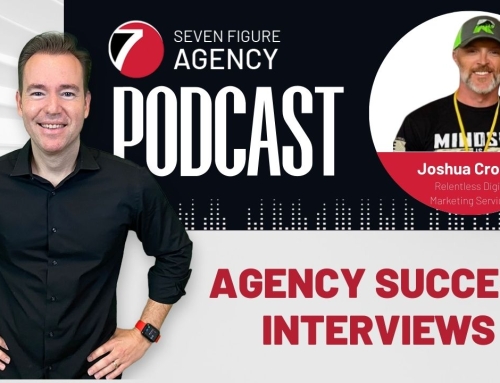Podcast: Embed
Jon Morris signed his first agency in 1996—two days after he graduated college. He grew the agency to 10 people but eventually closed it. After that, he spent some time at a large agency running their digital marketing. He even went back to college to study finance to get out of digital marketing. But he did an internship at a hedge fund and was bored out of his mind. Winning second place in the business competition “The New Venture Challenge” was the catalyst that led to the launch of Rise Interactive.
Entrepreneurs, venture capitalists, etc. believed in his model enough to place him 2nd and award him money so he felt like it was worth giving it a shot. His first year of sales was only $12,000. But he grew Rise Interactive to 250 employees and made just south of $40 million in net revenue by the time he left—with an eight-figure exit. What a phenomenal run. How did he do it? Learn more in this agency success interview.
Outline of This Episode
- [0:47] The origin story of Rise Interactive
- [3:05] Rise Interactive structure and services
- [5:18] Scaling his agency to eight figures
- [15:37] The evolution of sourcing clients
- [21:04] How Jon’s award strategy impacted growth
- [24:38] Key strategies to land clients and grow
- [30:21] Why Jon created a world-class experience for clients
- [39:32] How Jon positioned his company for acquisition
- [45:18] Learn how to properly valuate your business
- [49:54] Gross margin is critical to success
- [55:57] Learn more about Jon’s Fractional CMO services
Jon’s digital agency: Rise Interactive
In the beginning, Rise Interactive focused on paid search. The company soon expanded to digital media (search, SEO, programmatic, social media), web development (enterprise-level websites), and analytics—the glue that brought everything together. They used data to drive every decision they made. They had a sales department, marketing department, client services group, and an operations and finance group, and a product development group (they built their own proprietary technology).
Jon made $12,000 in profit in his first year, $80,000 in his second year, $350,000 in his third year, $750,000 in his fourth year, and broke $1 million in five years. 2009 was the only year he didn’t have double-digit growth (during the financial crisis). One of his largest clients was in the financial industry and went bankrupt, so he started the year down 40%. But he hit $1.1 million by year-end. After that, they went on a tear—growing in $6 million increments every year. How?
Scaling Rise Interactive to eight figures by investing in growth
Every June Jon planned for the next year. His plan was usually to double revenue. He’d always ask what he needed to do to hit his next goal. A typical agency should have a 50% gross margin, 30% should cover sales, marketing, and operational expenses, and 20% should cover the bottom line. Jon thought of himself as a private equity investor. Normally, they’d set a target of 20% but he chose to target a lower number. Why? It gave him more capital to invest in the business. He delayed profits to fuel the growth of the business.
Most agencies grow through word-of-mouth. They help generate leads for clients but many don’t invest in their own lead generation infrastructure. Jon emphasizes that you have to look at your marketing spend: What percent of your revenue do you spend on sales and marketing? If you’re between 0 to 3%, you’ll get stuck.
If you invest 3–6%, you’ll see manageable growth. If you’re investing 6–9%, you’re serious about your growth. If you’re investing upward of 9%, you’re looking to scale and grow your business. Jon believes two major levers allow you to have a sales and marketing budget of 9% or greater.
The first is your gross margin. If you can operate more efficiently, you can invest more in sales and marketing. The other lever? Delayed gratification. Are you willing to sacrifice some of your profits for growth? But you also have to spend the money intelligently. You have to test strategies to generate leads and allow your business to grow.
Customer retention should be your main focus
What’s the biggest takeaway Jon wants you to get? Your #1 sales goal is to NEVER lose a client due to performance. If you’re losing clients, there’s a bigger problem you must deal with. Sort your revenue by the customer that gives you the most. You’ll see that 20–25% of your customers represent 80% of your revenue. Hold on to those customers for dear life.
Jon always focused on the experience of becoming a customer. It HAD to be better than what they sold them on. You put your best foot forward when you’re selling to someone. But how often does someone buy a product and say, “Wow! This is so much better than what I was sold!.” It’s rare. In 2019, 20% of their revenue was from customers they sold in 2013. If you’re doing your job well over multiple years, you’ll have sales that go into perpetuity.
Sourcing clients through partnerships
Jon didn’t niche down in the early days. Instead, he focused on a region: Chicago. He went to local networking events multiple times a week. If anything was happening that was related to marketing, he was there. He also called competitors and complementary businesses to get referrals. The competitors he reached out to were large and referred any client too small to work with to him (i.e. partnership marketing).
Cold-calling and cold outreach does work but he found that the energy it took for someone to answer the phone was much greater. But when people did answer the phone, many were looking for an SEO provider. He grew a network of 50+ web development companies, advertising companies, and larger competitors that would outsource business to them. Don’t be afraid of the competition.
How Jon’s award strategy impacted growth
As Rise Interactive grew, they won awards in four different categories: culture, innovation, digital marketing, and growth. They did this with purpose. They had a database of 500+ awards in those categories. His theory was that no one remembers anyone that only wins one award. But if you win 30? They’ll remember you. They reverse-engineered awards and made sure they did the hard work necessary to be worthy of winning them. It took an active role in building their brand.
The Inc. 5000 list was an award they wanted to win every year. It was an easy submission. Forrester—on the other hand—was a full company-wide effort. The interviewing process, number of client references, size of the business, etc. was a rigorous process. Other awards meant developing complex campaigns. They started working on campaigns a year in advance. If a client wins “Best search campaign of the year” it validates their decision to choose you as a provider.
Jon firmly believes if someone is looking to use them and they have third parties recommending them as the best of the best, it builds credibility and trust.
Key strategies to land clients and grow
Jon followed a business model that allowed them a max of 50 clients total. Every time they gained a new client, they let go of another one. They continuously worked to win larger accounts, until their portfolio only consisted of million-dollar accounts. They found that it was just as easy to manage those accounts as a hundred-thousand-dollar account. Why? When you win a small account, the budget is 100% of what they have to offer, and your work is highly scrutinized. When you work with accounts that are millions of dollars, you might be the smallest line item in their budget.
How Jon created a world-class experience for clients
When it comes to annual planning, everything should have four goals a year: revenue, cash, profit, and infrastructure. You need to ask, “In 12 months, how is my business going to be better than it was today?” They invested in creating a remarkable experience and superior results for their clients. They looked at line items to make improvements to these categories.
How did they diligently provide superior results? One strategy was recruiting very heavily from the financial industry. Jon placed emphasis on analytical ability. Everyone had to take a test before they even got an interview. It had a 22% pass rate.
Secondly, you HAVE to be able to differentiate yourself, and answer these two questions:
- What differentiates you from thousands of other agencies?
- How are you more data-driven than the other agencies I talked to?
If you can’t answer the second question, you don’t have a real differentiator. Jon believes there are two ways to differentiate yourself. You either niche down or you focus on a specific element and be the best at it. Their differentiation was to leverage data to help brands make better marketing decisions.
How did Jon position his company for acquisition? What did his exit look like? What services does he offer now as a Fractional CMO? This interview is PACKED with useful strategies and information. Do not miss it!
Resources & People Mentioned
Connect with Jon Morris
- Ramsay Innovations
- Connect on LinkedIn
- Jon(at)RamsayInnovations.com
Connect With Josh Nelson
- Josh’s Coaching Page on Facebook
- The Agency Success Facebook Group
- www.SevenFigureAgency.com
- Seven Figure Agency on YouTube
- Josh on Twitter: @joshnelsonimc
- Josh on LinkedIn
Subscribe to The Seven Figure Agency
on Apple Podcasts, on Android, on Google Podcasts, RSS
Join Our Digital Marketing Agency Success Group on Facebook
Connect with 15,000+ other digital marketing agency owners. Share tips, ideas, and strategies for growing and scaling your Digital Marketing Agency. Click Here To Join The Facebook Group.
Watch Agency Success Interviews
Listen to interviews with highly successful Agency Owners on how they grew their business with our Agency Success Interview Series.


